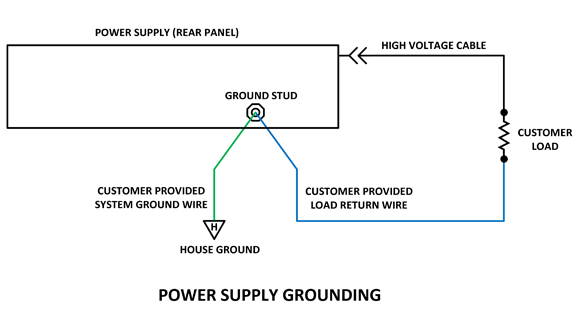High Voltage Power Supplies & Safety Information
How should I ground your supply?
Grounding is critical to proper power supply operation. The ground connection establishes a known reference potential that becomes a baseline for all other measurements. It is important that grounds in a system are low impedance, and are connected in such a way that if currents flow through ground conductors they do not create voltage level changes from one part of the system to another.
The best way to minimize the possibility of creating voltage differences in your system grounding is to use ground planes via chassis and frame connections. Since the source of the high voltage current is the power supply, it is recommended that it be the tie point for system grounds to other external devices.
The rear panel of the power supply should be connected to this system ground in the most direct, stout manner possible, using the heaviest gauge wire available, connected in a secure and durable manner. This ties the chassis of the supply to a known reference potential.
It is important to understand most damage to HV power supplies occur during load arcing events. Arcing produces very high transient currents that can damage power supply control circuitry (and other system circuitry) if grounding is not done properly. The product manual provides more detailed information regarding grounding requirements. If you have any additional questions, please contact the Sales Department.





